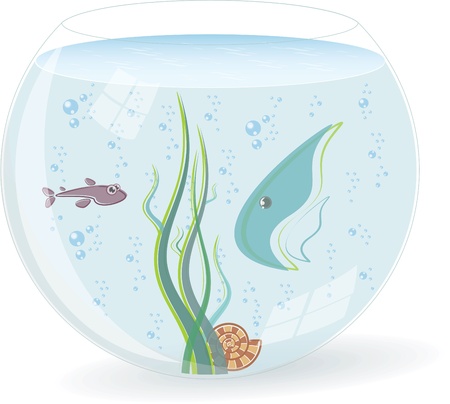Importance of Water Quality for Happy Fish
If you’ve ever watched your fish glide gracefully through their watery world, you know how soothing and joyful a well-kept aquarium can be. But did you know that the secret to those bright colors, lively swims, and playful interactions is all about water quality? Clean, balanced water isn’t just for looks—it’s the foundation of a healthy aquarium community. When the water is pristine, your aquatic pets are less stressed, more active, and much less likely to get sick. Poor water conditions can lead to cloudy tanks, unpleasant odors, and even dangerous spikes in toxins like ammonia and nitrites. Just as we thrive in fresh air and clean spaces, our fishy friends need a safe, stable environment to call home. Maintaining great water quality means you’re not just caring for individual fish—you’re nurturing a peaceful underwater neighborhood where everyone from curious bettas to playful tetras can flourish together. With the right care and attention, your aquarium becomes more than décor; it transforms into a vibrant, harmonious slice of nature right in your living room.
2. Setting Up for Success: Filtration and Aeration
Setting up your aquarium for long-term water quality starts with choosing the right filtration and aeration equipment. The filter is your tank’s main defense against harmful waste and toxins, while an air pump ensures your fish enjoy a healthy, oxygen-rich environment. When selecting a filter, consider both your tank size and the species you keep—some fish are messier than others or require specific water flow conditions. Similarly, aeration needs vary depending on how many fish you have and their oxygen requirements. Below is a handy guide to help you choose the right setup for your aquarium:
| Tank Size | Recommended Filter Type | Suggested Air Pump Output |
|---|---|---|
| Up to 10 gallons | Sponge or small hang-on-back (HOB) filter | Up to 10 gallons per hour (GPH) |
| 10–30 gallons | Medium HOB or internal power filter | 10–30 GPH |
| 30–55 gallons | Canister or large HOB filter | 30–60 GPH |
| Over 55 gallons | Larger canister or sump system | 60+ GPH; consider multiple outlets |
Keep in mind that some fish—like bettas—prefer gentle currents, while goldfish and cichlids need stronger filtration to handle their higher waste output. Always match your equipment to both your tank’s volume and your pets’ unique personalities. A well-chosen filter will remove debris and toxins efficiently, while a suitable air pump keeps the water moving and rich in oxygen, creating a thriving aquatic home reminiscent of a peaceful country pond.

3. Regular Water Testing and What to Watch For
If you want your fish to thrive like happy pups running through a field, regular water testing is key for any aquarium hobbyist. Think of water tests as a wellness checkup for your aquatic pets! You can easily monitor your tank’s pH, ammonia, nitrite, and nitrate levels using handy test kits found at most pet stores or online. These kits are super user-friendly—even if you’re new to fishkeeping, you’ll get the hang of it in no time.
pH is all about how acidic or alkaline your water is. Most freshwater fish are comfortable with a pH between 6.5 and 7.5, but always check what’s best for your specific finned friends. Ammonia and nitrite should both be at zero; even a little bit can stress or harm your fish. Nitrate is less toxic but should still be kept low (ideally under 20 ppm) by doing regular water changes and keeping up with plant care if you have live greens.
Your fish will give you some country-style clues if something’s off in the water. If they’re gasping at the surface, swimming strangely, losing color, or just acting “off” like a tired barn cat on a hot day, those could be signs of poor water quality. Always trust your gut—if something feels wrong, grab your test kit and check those levels!
By making testing part of your weekly routine—maybe right after you feed the chickens or walk the dog—you’ll catch problems early and keep your aquatic crew healthy and lively.
4. Establishing a Water Change Routine
Keeping your aquarium sparkling clean and your fish happy starts with a regular water change routine. But how often should you actually be swapping out water, and what’s the best way to do it without stressing out your aquatic buddies? Let’s break it down with some practical, pet-friendly advice that’ll make your tank maintenance as breezy as a Sunday morning on the porch.
How Often Should You Change Aquarium Water?
The frequency of water changes depends on your tank size, stocking level, and filtration, but here’s a simple guide:
| Aquarium Type | Suggested Frequency | Amount to Change |
|---|---|---|
| Heavily Stocked (Lots of Fish) | Every Week | 20-30% |
| Moderately Stocked | Every 2 Weeks | 15-25% |
| Lightly Stocked or Planted Tanks | Every 3-4 Weeks | 10-20% |
The Best Way to Change Water Without Stressing Fish
Your pets rely on a stable environment, so gentle handling is key. Always use a siphon or gravel vacuum to remove debris while taking out old water. Make sure any new water you add is dechlorinated and matched in temperature to your tank—sudden changes can spook or harm your fishy friends. Try to move slowly and avoid sudden movements that might startle them; think of it like tiptoeing through a barn full of sleeping puppies!
Steps for a Low-Stress Water Change:
- Turn off equipment: Pause filters and heaters if needed.
- Siphon carefully: Remove the right percentage of water, cleaning the substrate as you go.
- Add treated water: Make sure new water is dechlorinated and at the correct temperature.
- Restart equipment: Get everything running again, double-checking for proper operation.
- Treat your fish: Give them time to adjust before feeding or making further changes.
Why Regular Water Changes Keep Your Aquarium Fresh
A consistent water change schedule removes toxins like ammonia and nitrites, replenishes essential minerals, and keeps everything smelling as fresh as a field after spring rain. Plus, just like giving your pups a regular bath or brushing your goats’ coats, it’s an act of care that helps prevent health problems before they start—keeping both your gilled and furry family members thriving in their home environments!
5. Managing Feeding and Waste
One of the simplest tricks to keep your aquarium water clean is mastering how you feed your fish. Overfeeding is a common mistake, and it leads to excess food sinking to the bottom and decomposing, which quickly fouls the water. To avoid this, offer only as much food as your fish can eat in two to three minutes—no more. If you notice leftovers floating around after mealtime, scoop them out with a net right away.
Don’t forget that different species have different dietary needs, so research the best feeding schedule and portion size for your specific aquatic pets. Some folks find success with automatic feeders set to dispense tiny amounts throughout the day, mimicking a more natural feeding pattern and reducing waste.
Waste from fish and decaying plant material can also build up quickly, especially in busy community tanks. It’s wise to do a spot-cleaning with a gravel vacuum at least once a week. This helps remove uneaten food and waste that settle between the gravel pieces where your filtration system might not reach.
For those who love their underwater gardens, remember healthy plants actually help control waste by absorbing nitrates and offering extra filtration. But dying leaves need to be snipped off promptly—they’ll rot and release toxins otherwise. A little bit of routine attention pays off big time in keeping both pets and plants happy.
If you share your home with curious dogs or cats like I do, make sure they don’t “help” by tossing toys or treats into the tank! Keeping lids secure is just another way to protect your aquatic ecosystem from extra messes.
By being mindful of feeding habits and staying on top of tank tidiness, you create a harmonious environment where fish, shrimp, snails, and even living plants can thrive together—bringing a touch of peaceful countryside magic right into your living room.
6. Using Plants and Decorations for Natural Balance
Creating a thriving aquarium isn’t just about keeping your water clean; it’s also about making a cozy, balanced home for your aquatic pals. One of the best ways to boost water quality naturally is by adding live plants and thoughtfully chosen decorations. Let’s dig into how these simple touches can work wonders for your tank!
The Power of Live Plants
Live plants are like little green superheroes in your aquarium. They soak up nitrates—those sneaky waste products that can make water quality drop—and release fresh oxygen back into the tank. This natural cycle helps keep your fish healthy and the water crystal clear. Popular choices like Anubias, Java Fern, and Amazon Sword are not only beautiful but super easy to care for—even if you’re new to fishkeeping.
Decorations: More Than Just Pretty Faces
When it comes to decorations, think beyond just looks. Smooth rocks, driftwood, and caves provide safe hideaways where your fish can chill out or take a break from their tank mates. These cozy nooks help reduce stress (yes, fish get stressed too!) and encourage natural behaviors like exploring or laying eggs.
Setting Up for Success
If you want to go all-American with your decor, try mixing natural elements with fun, themed pieces—think barn-shaped caves or miniature log cabins! Just be sure any decoration you add is aquarium-safe and free from harmful chemicals or sharp edges.
Pro Tips for Plant & Decor Care
To keep everything in tip-top shape, trim dead leaves from your plants regularly and give your decorations a gentle scrub during water changes. Avoid using soap or cleaners—they can harm your finned friends.
With a mix of lush greenery and well-chosen decor, you’ll create a peaceful retreat that keeps your water clean and gives your pets plenty of places to play and rest. Your aquarium will soon become the most charming little pond this side of Main Street!

